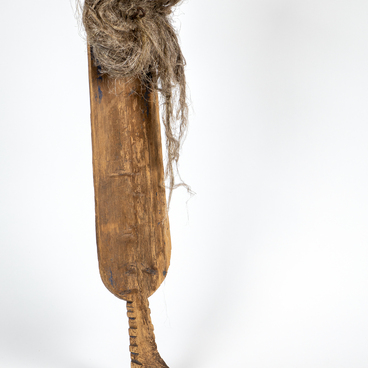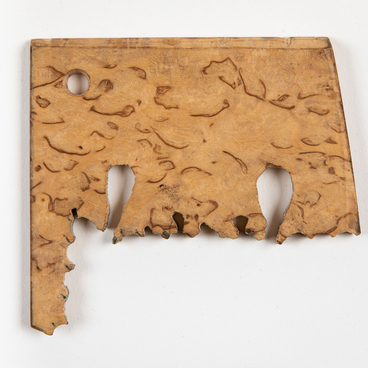The collection of the Sheltozero Veps Ethnographic Museum named after Rurik Petrovich Lonin features an old cutting board donated to the museum by Anastasia Egorovna Spirkova, a resident of Petrozavodsk. The board was made by her grandfather Nikolay Sergeevich Spirkov, who in the 1900s lived in an old Veps house on Pochtovaya Street in the village of Sheltozero.
The board is rectangular in shape with a small recess, a groove for salt, equipped with a handle, the central part also has a small recess. The board is made of a single piece of wood. It was used to serve boiled soup meat. Meat was served as a second course: on the board, the meat was cut and, if necessary, salted. In Veps families, it was believed that meat had to be earned. Therefore, such a board was placed in front of the oldest man in the house — the owner. It was he who distributed the pieces of meat to the family members according to the merits of the day.
Wood was the most affordable and easy-to-process
material. Therefore, not only cutting boards made of wood were widely used, but
also vessels made of a hollowed out tree or burl: buckets (v’adr, katil),
dippers (kous, kauh, kouvaz), ladles (cerpaak), serving spoons (pavaric),
mortars for pounding grain (humbar). Over time, such utensils were replaced by
the ones which were less difficult to manufacture — made by a cooper. Wooden
scoops were also used, which were more durable and comfortable. The burak
(cylindrical birch-bark box) for water resembled a flour storage box in shape.
The water was kept in it due to the tightness of the bonds. Sometimes its upper
edge was sheathed in leather. Three-layer containers (cylindrical birch-bark
containers) with a wooden bottom and a lid, to which a handle was attached,
were also made. These vessels were very convenient for storing dairy products.
To collect mushrooms and berries, wicker baskets made of tree bark with a
handle in the form of a bow were woven. When picking berries, miniature baskets
called “nabirushki” were also used for convenience. Alternatively, baskets were
made from wood sliver. There were always a lot of cutting boards in the house:
special boards for meat, different ones for fish, and others for baking and
bread products. They were thoroughly washed and dried on a stove, thereby
disinfecting the wooden surface.


